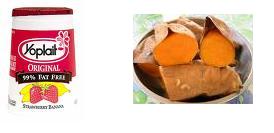\ the escape character - used to find an instance of a metacharacter like a period, brackets, etc.
. (period) match any character except newline
x match any instance of x
^x match any character except x
[x] match any instance of x in the bracketed range - [abxyz] will match any instance of a, b, x, y, or z
| (pipe) an OR operator - [x|y] will match an instance of x or y
() used to group sequences of characters or matches
{} used to define numeric quantifiers
{x} match must occur exactly x times
{x,} match must occur at least x times
{x,y} match must occur at least x times, but no more than y times
? preceding match is optional or one only, same as {0,1}
* find 0 or more of preceding match, same as {0,}
+ find 1 or more of preceding match, same as {1,}
^ match the beginning of the line
$ match the end of a line
POSIX Class Match
[:alnum:] alphabetic and numeric characters
[:alpha:] alphabetic characters
[:blank:] space and tab
[:cntrl:] control characters
[:digit:] digits
[:graph:] non-blank (not spaces and control characters)
[:lower:] lowercase alphabetic characters
[:print:] any printable characters
[:punct:] punctuation characters
[:space:] all whitespace characters (includes [:blank:], newline, carriage return)
[:upper:] uppercase alphabetic characters
[:xdigit:] digits allowed in a hexadecimal number (i.e. 0-9, a-f, A-F)
Character class Match
\d matches a digit, same as [0-9]
\D matches a non-digit, same as [^0-9]
\s matches a whitespace character (space, tab, newline, etc.)
\S matches a non-whitespace character
\w matches a word character
\W matches a non-word character
\b matches a word-boundary (NOTE: within a class, matches a backspace)
\B matches a non-wordboundary
\
The backslash escapes any character and can therefore be used to force characters to be matched as literals instead of being treated as characters with special meaning. For example, '\[' matches '[' and '\\' matches '\'.
.
A dot matches any character. For example, 'go.d' matches 'gold' and 'good'.
{ }
{n} ... Match exactly n times
{n,} ... Match at least n times
{n,m} ... Match at least n but not more than m times
[ ]
A string enclosed in square brackets matches any character in that string, but no others. For example, '[xyz]' matches only 'x', 'y', or 'z', a range of characters may be specified by two characters separated by '-'. Note that '[a-z]' matches alphabetic characters, while '[z-a]' never matches.
[-]
A hyphen within the brackets signifies a range of characters. For example, [b-o] matches any character from b through o.
|
A vertical bar matches either expression on either side of the vertical bar. For example, bar|car will match either bar or car.
*
An asterisk after a string matches any number of occurrences of that string, including zero characters. For example, bo* matches: bo, boo and booo but not b.
+
A plus sign after a string matches any number of occurrences of that string, except zero characters. For example, bo+ matches: boo, and booo, but not bo or be.
\d+
matches all numbers with one or more digits
\d*
matches all numbers with zero or more digits
\w+
matches all words with one or more characters containing a-z, A-Z and 0-9. \w+ will find title, border, width etc. Please note that \w matches only numbers and characters (a-z, A-Z, 0-9) lower than ordinal value 128.
[a-zA-Z\xA1-\xFF]+
matches all words with one or more characters containing a-z, A-Z and characters larger than ordinal value 161 (eg. ä or Ü). If you want to find words with numbers, then add 0-9 to the expression: [0-9a-zA-Z\xA1-\xFF]+
Typical examples
(bo*)
will find "bo", "boo", "bot", but not "b"
(bx+)
will find "bxxxxxxxx", "bxx", but not "bx" or "be"
(\d+)
will find all numbers
(\d+ visitors)
will find "3 visitors" or "243234 visitors" or "2763816 visitors"
(\d+ of \d+ messages)
will find "2 of 1200 messages" or "1 of 10 messages"
(\d+ of \d+ messages)
will filter everything from the last occurrence of "2 of 1200 messages" or "1 of 10 messages" to the end of the page
(MyText.{0,20})
will find "MyText" and the next 20 characters after "MyText"
(\d\d.\d\d.\d\d\d\d)
will find date-strings with format 99.99.9999 or 99-99-9999 (the dot in the regex matches any character)
(\d\d\.\d\d\.\d\d\d\d)
will find date-strings with format 99.99.9999
(([_a-zA-Z\d\-\.]+@[_a-zA-Z\d\-]+(\.[_a-zA-Z\d\-]+)+))
will find all e-mail addresses
[ add comment ] | permalink | related link |




 ( 3 / 5160 )
( 3 / 5160 )
今天是感恩节,上超市瞎逛,买了瓶绍兴加饭酒,还记得小时候爸爸常喝,加上话梅,加热了喝,强身健体,想试试.
但是看到超市里的绍兴酒好多种类,有点挠头,回来作了一下研究. 如下
-------------------
我们平日所说的绍兴黄酒只是一个地域范围的概念,即指在绍兴境内所产黄酒的总称。其实在历史发展过程中,代有创造,时有发展,绍兴黄酒品种繁多,如朵朵奇葩丰富多彩。这些不同品类的酒既有绍兴黄酒共有的甘冽芬芳、橙黄澄洁的特色,又各具独特风味。
其主要名品如下:
元红酒——又称状元红,因过去在坛壁外涂刷朱红色而得名,是绍兴黄酒的代表品种和大宗产品。此酒发酵完全,含残糖少,色泽橙黄清亮,有独特芳香,味爽微苦,含酒精16~19%,含糖0.4~0.8克/100毫升以下,总酸0.45克/100毫升以下,受到嗜酒者的普遍喜爱。是干型黄酒的典型代表。
加饭酒——绍兴黄酒中之最佳品种。加饭,顾名思义是与酒相比,在原料配比中,加水量减少,而饭量增加。由于醪液浓度大,成品酒度高,所以酒质特醇,俗称“肉子厚”。过去,因配方不同,分为单加饭和双加饭,后为迎合消费者的需求,全部生产双加饭,外销称为特加饭。此酒酒液像琥珀那样深黄带红,透明晶莹,郁香异常,味醇甘鲜,含酒精17.5~19.5%,含糖1.5~3.0克/100毫升,总酸0.45克/100毫升以下。在绍兴黄酒总外销量中占9/10,深得中外饮者青睐,是半干型黄酒的典型代表。以坛装的陈年加饭酒,叫花雕酒。其坛包装精美,可作高档礼品。
善酿酒——以存储1~3年的元红酒代水酿成的双套酒。深黄色。其香芳郁,质地特浓,口味甜美,含酒精13.5~16.5%,含糖6~7克/100毫升,总酸0.5~0.55克/100毫升。为绍兴黄酒之高档品种。此酒在清代由沈永和酿坛创始。该坊在酿酒的同时酿制酱油,酿酒师傅从酱油酿制中得到启发,即以酱油代水做母子酱油的原理来酿制绍兴黄酒,以提高品质,得以成功。所以,善酿酒是品质优良的母子酒。也是半甜型黄酒的典型代表。
香雪酒——以陈年糟烧代水用淋饭法酿制而成,也是一种双套酒。酒液淡黄清亮,芳香幽雅,味醇浓甜。含酒精17.5~19.5克/100毫升,含糖19~23克/100毫升,总酸0.4克/100毫升以下。陈学本《绍兴加工技术史》记述:1912年,东浦乡周云集酿坊的吴阿惠师傅和其他酿师们,用糯米饭、酒药和糟烧,试酿了一缸绍兴黄酒,得酒12大坛,以后逐年增加产量,出而应市。试酿成功后,工人师傅认为这种酒由于加用了糟烧,味特浓,又因酿制时不加促使酒色变深的麦曲,只用白色的酒药,所以酒糟色如白雪,故称香雪酒。它是甜型黄酒的典型代表。
加饭酒经多年贮存即为花雕酒。按浙江地方风俗,民间生女之年要酿酒数坛,泥封窖藏,待女儿长大结婚之日取出饮用,即是花雕酒中著名的“女儿红”。因这种酒在坛外雕绘有我国民族风格的彩图,故取名“花雕酒”或“元年花雕”。
按酿造方法对黄酒分类可将黄酒分成三类:
淋饭酒:淋饭酒是指蒸熟的米饭用冷水淋凉,然后,拌入酒药粉末,搭窝,糖化,最后加水发酵成酒。口味较淡薄。这样酿成的淋饭酒,有的工厂是用来作为酒母的。即所谓的“淋饭酒母”。
摊饭酒:是指将蒸熟的米饭摊在竹篦上,使米饭在空气中冷却,然后再加入麦曲、酒母(淋饭酒母)、浸米浆水等,混合后直接进行发酵。
喂饭酒:按这种方法酿酒时,米饭不是一次性加入,而是分批加入。
功能
保健功能:具有和血、行气、行神、驱寒、壮筋骨等诸多保健功能。常饮用能使人精神旺盛,体力充沛。据《本草纲目》记载,可与许多名贵中药泡制成疗效显著的经酒。有固本增元,祛除病痛的功效。
营养功能:营养丰富,内含21种氨基酸,好多种蛋白质、糖类和维生素。
调味功能:可去腥、增香,使菜肴更加鲜美。
-------------------------------
最后祝大家感恩节快了!!
[ add comment ] | permalink | related link |




 ( 3 / 10082 )
( 3 / 10082 )Picasa 相册 屏蔽 翻墙 host 批处理
相信能找到这篇文章的一定不是菜鸟
保存到记事本后重命名为 picasa.bat 双击运行
话不多说 直接上代码(转载的)
@attrib %windir%\SYSTEM32\drivers\etc\hosts -r
@echo 203.208.39.104 picadaweb.google.com >> %windir%\SYSTEM32\drivers\etc\hosts
@echo 203.208.39.104 lh1.ggpht.com >> %windir%\SYSTEM32\drivers\etc\hosts
@echo 203.208.39.104 lh2.ggpht.com >> %windir%\SYSTEM32\drivers\etc\hosts
@echo 203.208.39.104 lh3.ggpht.com >> %windir%\SYSTEM32\drivers\etc\hosts
@echo 203.208.39.104 lh4.ggpht.com >> %windir%\SYSTEM32\drivers\etc\hosts
@echo 203.208.39.104 lh5.ggpht.com >> %windir%\SYSTEM32\drivers\etc\hosts
@echo 203.208.39.104 lh6.ggpht.com >> %windir%\SYSTEM32\drivers\etc\hosts
注销或重启后有效
if it does not work, try to change IP address above as following
203.208.39.99 or 203.208.33.100
Good luck!!
[ add comment ] | permalink | related link |




 ( 3 / 4954 )
( 3 / 4954 )
上廣下欽老和尚有一句開示,很耐得我們去體會。
他說:「做得要死,又被人嫌,就叫做六度總修(台語)」。
意思是你若賣命地做,又遭人嫌,就叫做六度總修。
我剛聽到這句話,一時還不太明白,以後仔細想,覺得很有道理。
學佛的人應該都知道,六度就是六種度過生死苦海的修行法。
亦即布施,持戒、忍辱、精進、禪定、般若智慧。
什麼叫「做得要死」呢?就是很賣命為人做事,這表示有布施—布施精神體力。盡心去做,就是拼了最後一口氣也在所不惜,這才叫賣命—「做得要死」。
這種「做得要死」的布施並不是簡單的,
要非常「精進」才有可能做到連死都不怕。
這樣精進的布施,這就有「布施」和「精進」二度了。
結果又被人嫌,被人嫌怎麼辦呢?就是修「忍辱」啊!
我們如果沒有一點「禪定」的能力,人家開口一嫌,我們心就動了,
心若動就會難過,所以人家嫌我們也是幫助我們修「禪定」;
如果沒有「智慧」想得開,硬是要將那口氣壓下來,也是壓不下來的,
如果沒有「持戒」就動心動口對他回嘴,他如果嫌,我就罵他。
所以一個人果真賣命做,又被人嫌,真的就是六度總修。
但是我們想想看,時常我們都不會把握機會,不能「六度總修」,
而把總修,這修行的「修」改成了休息的「休」,
變成六度都完蛋,破功停頓,不時都是「六度總休」。
我們若是做了一點事,根本還未到快死的程度,
被人一嫌,就六度總休了,就火燒功德林,什麼都燒得光光的,
只會哭得很委屈,心中一直氣那個人,不體會別人的辛苦,反倒嫌人家!?
到底是「誰」真太沒修養了,還嫌人!??
---------------------------------------
广钦(1892年-1986年),
又名释广钦、广钦法师、广钦禅师、广钦老和尚、果子师(即水果师);中国福建泉州人,佛教僧侣。广钦最大的成就在于1948年之后于台湾的佛教宣扬工作,而与其它同时期前往台湾宣教的中国佛教僧侣不同,广钦并不识字,但他凭着苦修挂单的身教宣扬,成为台湾知名的佛教僧侣之一,也于台湾创立多间佛教庙宇。
另外,关于广钦的佛教神通与传说相当多,例如传说他1947年-1964年于台多次入定,并于修行期间仅以山林野生水果果腹,未尝食其它种类食物。因此,台湾民间有「果子师」的闽语尊称。
1986年,他以96岁高龄去世于他一手创办的承天禅寺里,去世前两天仍于该寺从事佛教宣扬活动。
[ add comment ] | permalink | related link |




 ( 3 / 868 )
( 3 / 868 )簡單有效的 排宿便餐

日本辨野博士推介排除宿便的目標。 週末 一公斤 宿便排毒餐:
週五晚上 : 250克優酪乳 + 500克地瓜 (蒸熟連皮吃) + 蘋果2個
週六晚上: 250克優酪乳 + 500克地瓜 (蒸熟連皮吃)
週日早上: 痛快排便,徹底清除宿便。
個人經驗是﹐僅靠快走﹐其中一小段是上坡水泥路﹐就達到同樣效果。
每日早上起床﹐快走約 1 個小時。
研究腸道細菌已經34年的日本辨野博士表示,
現代人普遍都有排便量不足的問題,
一般的上班族婦女,一天的排便量可能只有100∼200公克,
排便量與每天吃進去的食物,根本不成正比,
而消化完的廢棄物,由於無法排出體外,
就累積在腸道內,造成腸道老化。
由於現代人生活緊張忙碌,要求每天都能大量排便實在困難,
辨野博士因此退而求其次,只要在週日能夠徹底清除宿便。
辨野博士設計的週末排毒餐,是透過三天連續的飲食計劃,
在週末可以排出 1 公斤的宿便,幫助體內環保與排毒。
他實施一年的時間,在沒有任何節食的情況下,體重減輕 10公斤,
體脂肪從 28% 降低為 23%,膽固醇值降為正常,
痛風及花粉症問題也都完全解決,而且他每天都可以定時排便。
辨野博士的週末 1公斤 宿便排毒餐的原理,
是利用大量的纖維質清洗腸道。
不需要節食,只是把週五與週六晚上的晚餐,
用排毒餐取代,即可達到週日上午痛快!
辨野博士建議民眾,除了吃週末 1公斤宿便排毒餐,
最好還能配上每天快走8000步。
從飲食與運動雙方面著手,不但可以
排除宿便,防止腸道老化,還能附帶有減肥效果,
辨野博士希望能夠幫助民眾,一起對抗腸道老化,預防大腸癌。
[ add comment ] | permalink | related link |




 ( 3 / 8378 )
( 3 / 8378 ) Back Next
Back Next

 Avatar
Avatar












